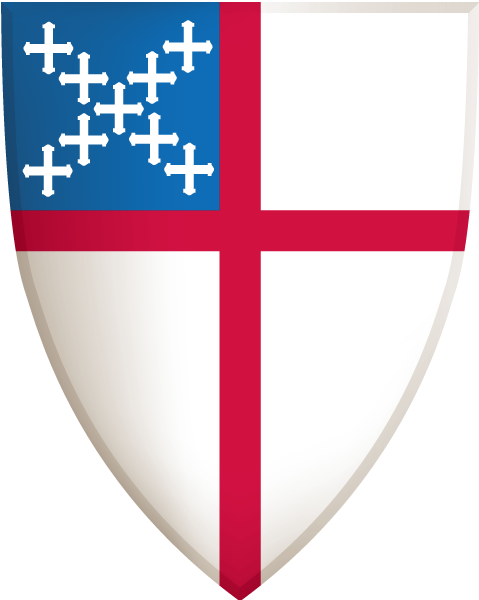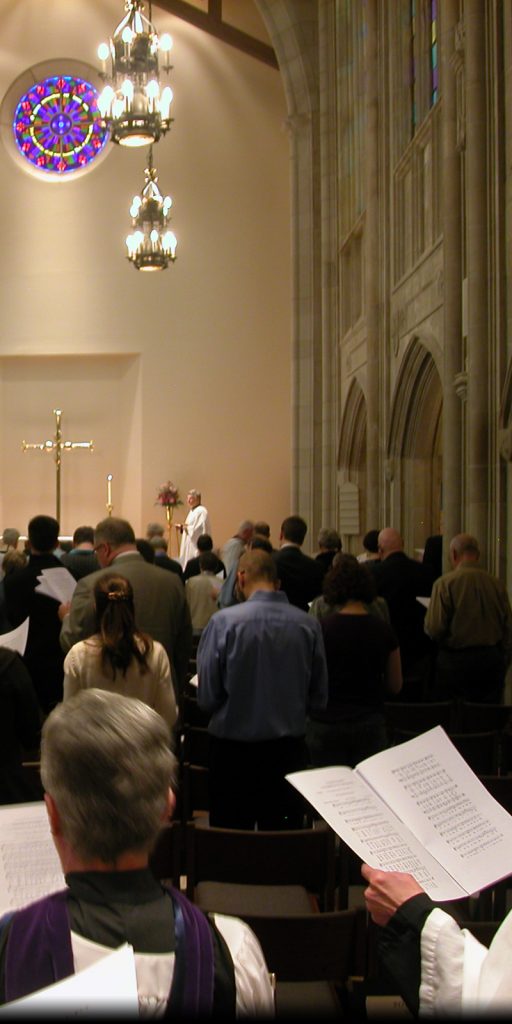I will sprinkle clean water upon you, and purify you from false gods and uncleanness. Ez. 36:25
The Baptismal Font is the place where Holy Baptism occurs, the sacrament by which God adopts us as children and makes us members of Christ’s Body, the Church, and inheritors of the kingdom of God. Following the ancient formula, those who come to God in faith are baptized with water, and in the Name of the Father, and of the Son, and of the Holy Spirit.
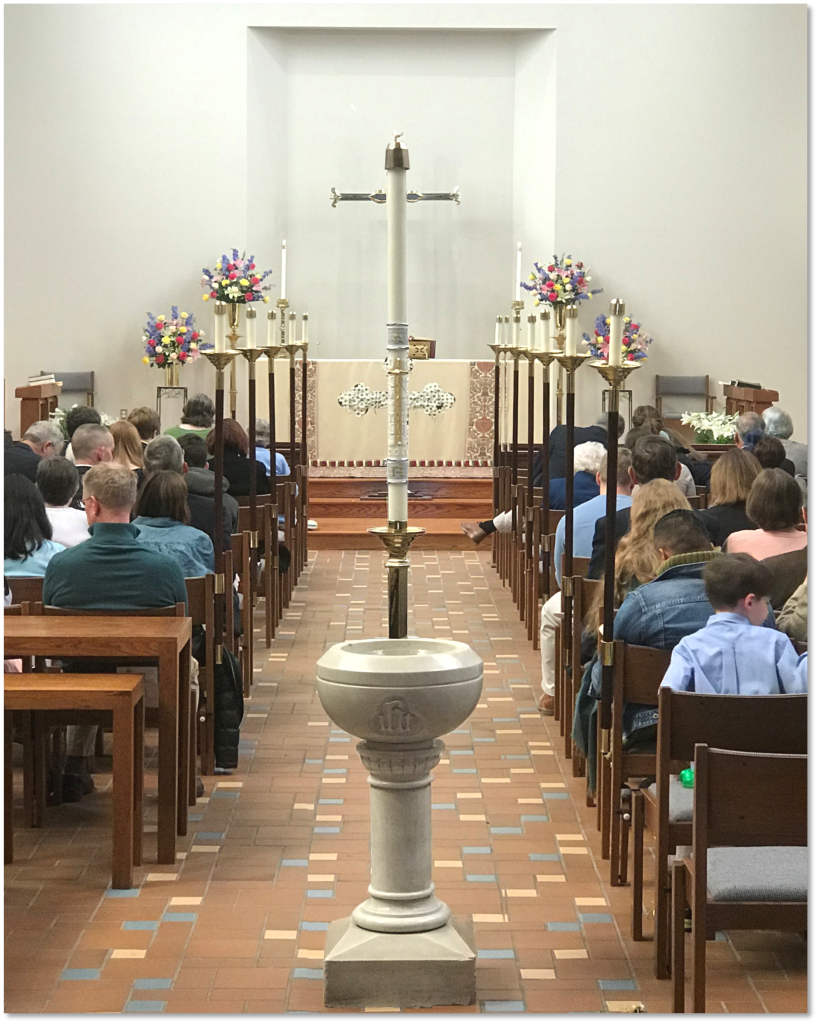
At the Baptismal Font
 Baptismal Font – The term comes from the Latin fons, “spring of water,” and designates a receptacle for baptismal water. Fonts in the early church were pools or sunken basins, often in the shape of a cross, in which candidates were immersed in running water. Many fonts remained large even after infant baptism became the norm, but they were raised above ground for convenience. Eventually the typical font was the size of a wash basin, and even adult candidates were baptized by pouring a little water on their heads. The ancient practice never died out, however, and the BCP lists immersion as a method of baptizing.
Baptismal Font – The term comes from the Latin fons, “spring of water,” and designates a receptacle for baptismal water. Fonts in the early church were pools or sunken basins, often in the shape of a cross, in which candidates were immersed in running water. Many fonts remained large even after infant baptism became the norm, but they were raised above ground for convenience. Eventually the typical font was the size of a wash basin, and even adult candidates were baptized by pouring a little water on their heads. The ancient practice never died out, however, and the BCP lists immersion as a method of baptizing.

 Aspergillum – An aspergillum (tube with holes) or a small branch of a tree or shrub may be used to sprinkle holy water during a church service or at other times. It is especially appropriate to sprinkle the congregation with holy water at the Renewal of Baptismal Vows at the Easter Vigil and at other times of renewal of the baptismal covenant. The asperges is the ceremony of sprinkling holy water over the altar, clergy, and people before the eucharist.
Aspergillum – An aspergillum (tube with holes) or a small branch of a tree or shrub may be used to sprinkle holy water during a church service or at other times. It is especially appropriate to sprinkle the congregation with holy water at the Renewal of Baptismal Vows at the Easter Vigil and at other times of renewal of the baptismal covenant. The asperges is the ceremony of sprinkling holy water over the altar, clergy, and people before the eucharist.
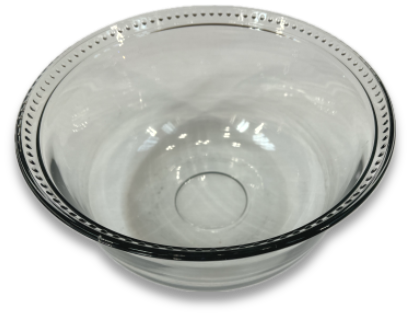
Bowl for Baptismal font –
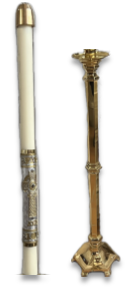 Paschal Candle and Paschal Candle Stand -A Paschal Candle is a large candle that symbolizes the risen Christ. It is often decorated with a cross, symbols of the resurrection, the Greek letters Alpha and Omega, and the year. The term “Paschal” concerns Easter or Passover. At the Easter Vigil, the Paschal candle is lit from the new fire. It is carried by the deacon, who pauses three times and sings or says, “The light of Christ,” and the people respond, “Thanks be to God.” The Paschal candle is carried by the celebrant if there is no deacon. After it is carried to the chancel, its flame may be used to light candles held by members of the congregation. This symbolizes the spreading of the light of Christ into the congregation and the world. The Exsultet is sung or said after the Paschal candle is placed in its stand. It is customary for the Paschal candle to burn at all services from Easter through Pentecost (BCP, pp. 285-287). After the Easter season, the Paschal candle is typically placed near the font. It should burn at baptisms, representing the new life in Christ that we share in baptism. The newly baptized person may be given a small baptismal candle that is lit from the Paschal candle. It is also carried in procession at burials and placed near the coffin as a symbol of resurrection life.
Paschal Candle and Paschal Candle Stand -A Paschal Candle is a large candle that symbolizes the risen Christ. It is often decorated with a cross, symbols of the resurrection, the Greek letters Alpha and Omega, and the year. The term “Paschal” concerns Easter or Passover. At the Easter Vigil, the Paschal candle is lit from the new fire. It is carried by the deacon, who pauses three times and sings or says, “The light of Christ,” and the people respond, “Thanks be to God.” The Paschal candle is carried by the celebrant if there is no deacon. After it is carried to the chancel, its flame may be used to light candles held by members of the congregation. This symbolizes the spreading of the light of Christ into the congregation and the world. The Exsultet is sung or said after the Paschal candle is placed in its stand. It is customary for the Paschal candle to burn at all services from Easter through Pentecost (BCP, pp. 285-287). After the Easter season, the Paschal candle is typically placed near the font. It should burn at baptisms, representing the new life in Christ that we share in baptism. The newly baptized person may be given a small baptismal candle that is lit from the Paschal candle. It is also carried in procession at burials and placed near the coffin as a symbol of resurrection life.

Pitcher for Baptismal water – Used to pour water into the font during the baptismal rite.
 Baptismal Shell – A Baptismal shell is used during the baptismal ceremony to pour water over the head of a child who is being baptized. The shell is a sign of pilgrimage. It reminds us that the child is starting out on a journey as a Christian.
Baptismal Shell – A Baptismal shell is used during the baptismal ceremony to pour water over the head of a child who is being baptized. The shell is a sign of pilgrimage. It reminds us that the child is starting out on a journey as a Christian.
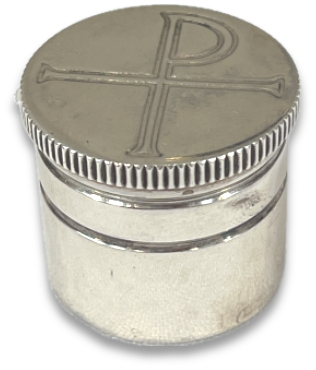 Chrism – Chrism is a mixture of olive oil and fragrant balsam that is used for the anointing after baptism. This oil has been blessed by the bishop and is placed on the forehead with the sign of the cross with the words, “You are sealed by the Holy Spirit in Baptism and marked as Christ’s own for ever.” Receptacles for chrism are often marked with the abbreviation “SC,” sanctum chrisma. Chrism is sometimes also used at Confirmation.
Chrism – Chrism is a mixture of olive oil and fragrant balsam that is used for the anointing after baptism. This oil has been blessed by the bishop and is placed on the forehead with the sign of the cross with the words, “You are sealed by the Holy Spirit in Baptism and marked as Christ’s own for ever.” Receptacles for chrism are often marked with the abbreviation “SC,” sanctum chrisma. Chrism is sometimes also used at Confirmation.
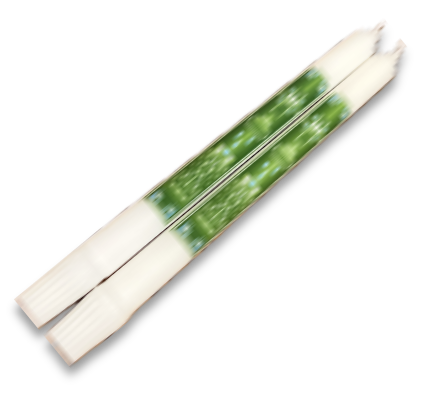 Baptismal Candle – The baptismal candle, which is handed over to the parents or to the godparents of the newly baptized, symbolizes Christ, the light of the world, in the hope that he will enlighten the child and allow those who love him and support him or her to accompany him in the faith. It symbolizes the help the Church must provide to this new member, to support their life in Christ. Light was the first gift of God, his first creation. In the Old Testament it was a symbol of Faith, and with the advent of Jesus this symbolism was enriched with new fundamental meanings in the life of a faithful. “I am the true light” Jesus said to the disciples: “You are the light of the world … your light must shine before men so that they may see your good works and glorify the Father who is in heaven!” (Matt. 5:16).This represents the Christian’s commitment to finding the light of their own life of faith, to be in turn, a light of the world through their works and actions.
Baptismal Candle – The baptismal candle, which is handed over to the parents or to the godparents of the newly baptized, symbolizes Christ, the light of the world, in the hope that he will enlighten the child and allow those who love him and support him or her to accompany him in the faith. It symbolizes the help the Church must provide to this new member, to support their life in Christ. Light was the first gift of God, his first creation. In the Old Testament it was a symbol of Faith, and with the advent of Jesus this symbolism was enriched with new fundamental meanings in the life of a faithful. “I am the true light” Jesus said to the disciples: “You are the light of the world … your light must shine before men so that they may see your good works and glorify the Father who is in heaven!” (Matt. 5:16).This represents the Christian’s commitment to finding the light of their own life of faith, to be in turn, a light of the world through their works and actions.
